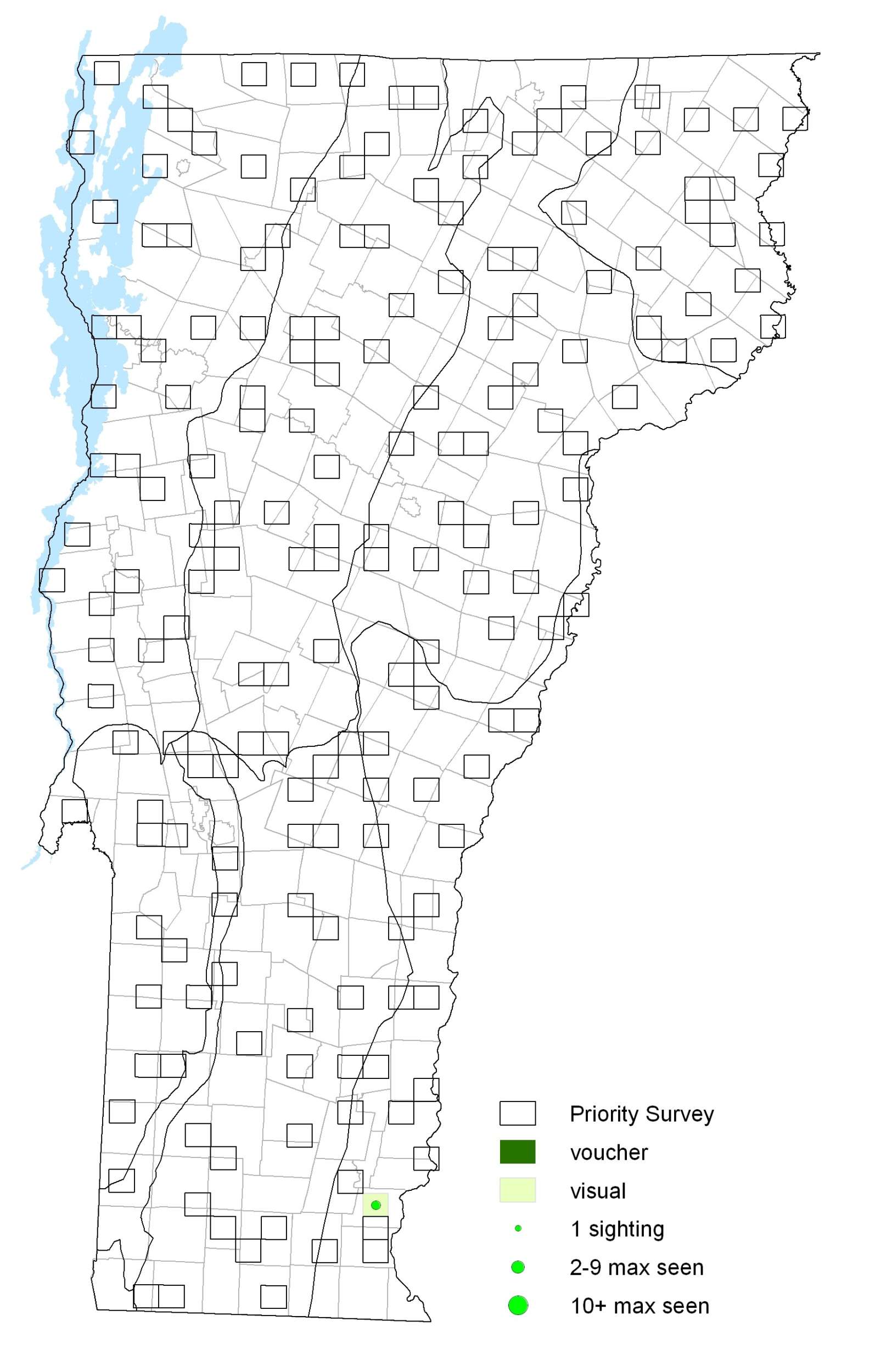|
Resident Conservation Status North American Range |
Reported to use a number of larval hostplants from a wide range of plant families across its range, including introduced, invasive buckthorn (Rhamnus), which may allow it to expand its range in the future. Males perch on host plants during warm daylight hours. Caterpillars eat buds and young leaves, and pupate in litter at the base of the hostplant. Pupae overwinter.
Identification
Small and tailed. Upperside dark brown; male without oval spot at forewing front edge. Often a dull orange tinge at outer margin of forewing and near tail of hindwing. Underside forewing with fairly straight postmedian line; hindwing with some white in the postmedian line.
Flight
In the north one brood flies from April through early June. There were three visual records during VBS, 22-29 April 2005 in Dummerston (K. Hemeon). Repeated visits failed to relocate any individuals.
Distribution and Habitat
Able to utilize variety of habitats were its hostplants are abundant: edges of wooded swamps, upland heaths, sand plains, and open pine-oak woodlands. Only observed at one location in Vermont, Black Mountain in Dummerston, a pitch pine-oak-heath rocky summit. Potential caterpillar hosts in Vermont include huckleberries and blueberries (Vaccinium) and buckthorn (Rhamnus). During the Massachusetts Butterfly Atlas found nectaring on blueberry.






